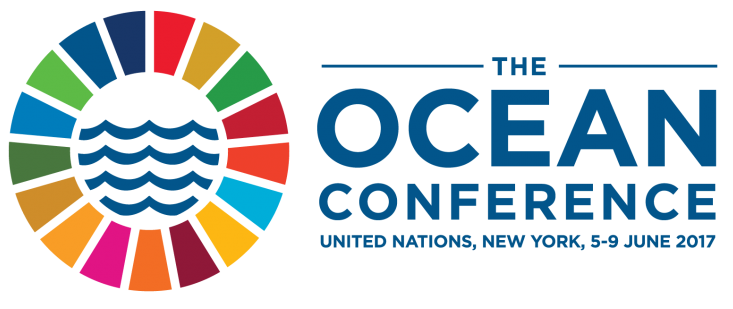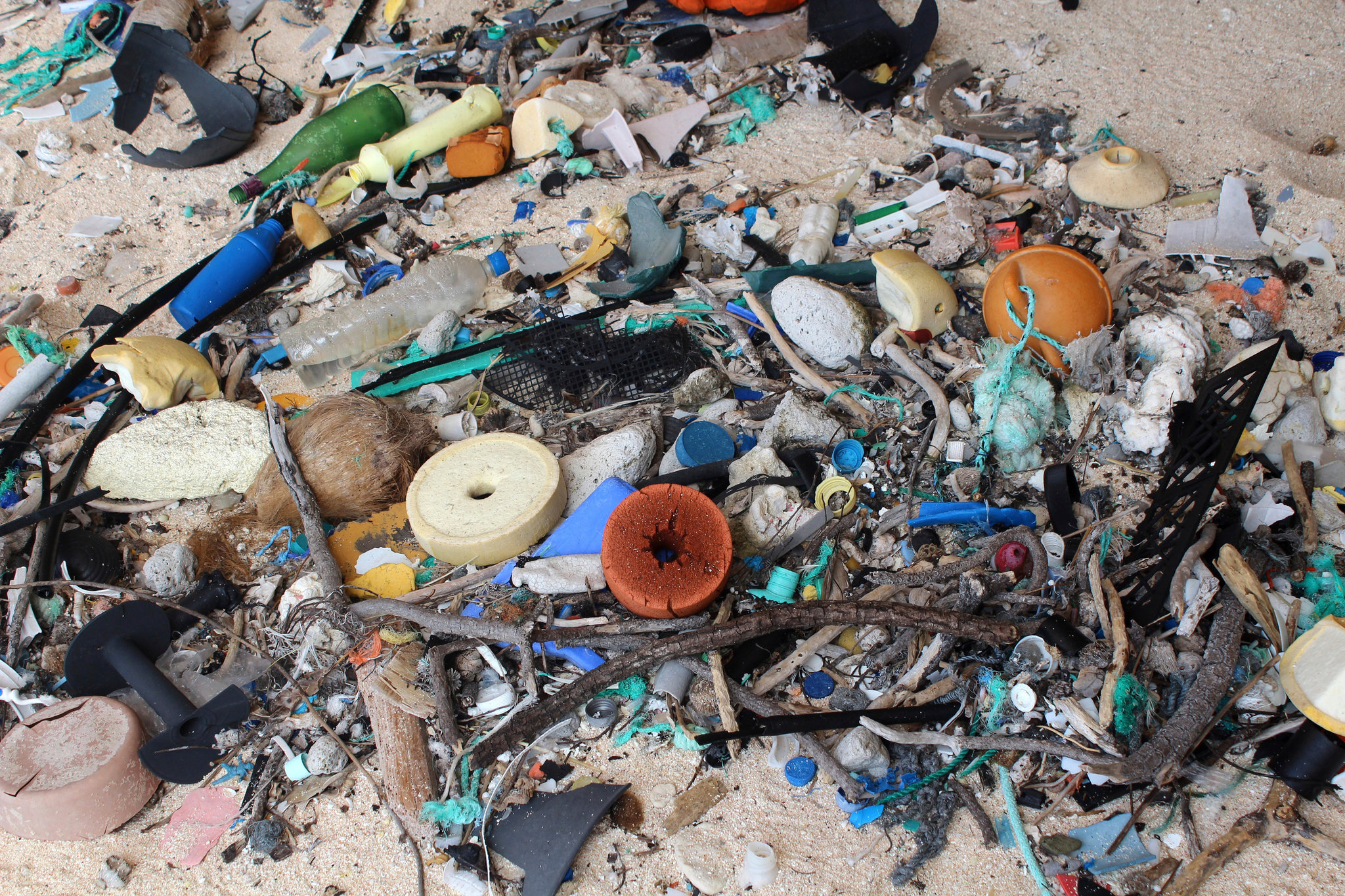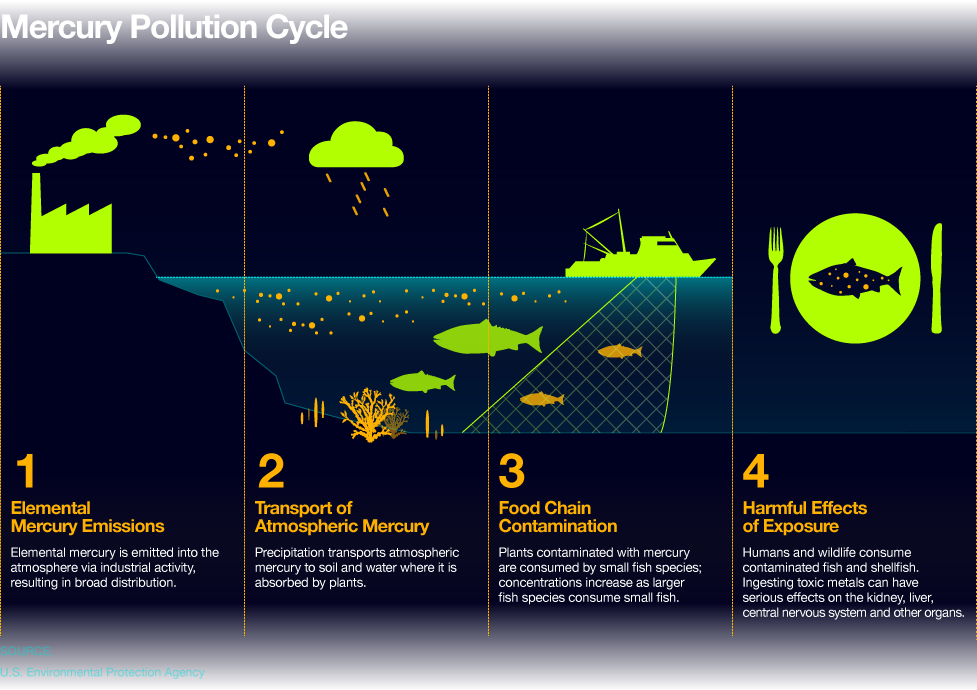Adverse Health Effects of Plastic
Key concepts:
• amount of plastic produced
• amount of plastic trash
• microplastics
• plastic trash impacts
• plastic toxicity
• chemical migration from plastic packaging
The International Union for the Conservation of Nature found that almost all of plastic in the ocean comes from land, from rivers and runoff from highly populated coastal cities, and a relatively small amount from maritime activities such as fishing and shipping. In tens of thousands of landfills across the globe, plastic leaches toxic chemicals into the groundwater, which flows into lakes, rivers and the oceans.
The United Nations Ocean Conference brings together global experts to address the challenges of our oceans.

A position paper produced for this occasion summarizes IUCN views on the major topics related to ocean conservation, such as climate change, Marine Protected Areas, ocean shipping, invasive alien species, international law and gender.
Plastic Durability
Plastic is an extremely long-lived product, so it should not be used for single-use disposables. Most of the plastic that has been used is still in the environment today. Even when diligently placed in recycling bins, it is not getting turned into other products. Without a profitable market in which to sell recycled plastic, it is not cost-effective for recycling companies to process it, so it is often sold to developing nations that also do not have recycling capabilities.
Plastic that is not biodegradable can take 100 to 450 years to decompose (and many plastics claimed to be biodegradable do not biodegrade).
Ocean Plastic
In the ocean, ultraviolet light makes plastic brittle and wave action crushes it, breaking it down into microplastic particles. A 2017 expedition to the uninhabited Henderson Island in the South Pacific estimated 17.6 million tonnes of plastic debris that had washed up on this tiny island, showing the pervasiveness of plastic trash.

Microplastic
Microplastic is defined as “extremely small pieces of plastic debris in the environment resulting from the disposal and breakdown of consumer products and industrial waste.” Microplastic pieces often release toxic chemicals, but even when they do not, they are often mistaken for fish or other food and consumed by marine life, filling their stomachs with waste that cannot be processed as food.
Plastic Shores: ‘Micro-plastics’ Animation from Alice Dunseath on Vimeo.
Plankton, the smallest ocean creatures, eat microplastics, absorbing their toxins and displacing the nutritive algae that creatures up the food chain require. Phytoplankton produce 70% of the earth’s oxygen and sequester 40% of our carbon. Microplastics and plastic toxicity spoil groundwater and enter the land and oceanic food chains, affecting the health and well-being of all life forms, humans, birds, animals, and wildlife, through ingestion, entanglement, and habitat disruption. Manufacturers’ additives in plastics, like flame retardants, BPAs and PVCs, and oily poisons that repel water and stick to petroleum-based objects like plastic debris leach toxins.
Plastic absorbs toxic chemicals
Plastic absorbs toxic chemicals like PCBs and DDTs, chemicals linked to endocrine disruption and cancer. Chemicals leached by plastics are now in the blood and tissue of nearly everyone and everything. Many current disorders may be due to plastic toxicity, such as from bisphenol A, since cumulative exposure only shows up after it is too late to reverse the effects. Exposure is linked to cancers, birth defects, impaired immunity, endocrine disruption and other ailments, which costs billions to treat. According to Harvard School of Public Health Professor of Epidemiology Karin Michels, “The nightmare scenario is that we one day find out that a lot more of our current disorders, including infertility and cancer, may be due to bisphenol A and only show up after cumulative exposure. But by then, we all have accumulated so much exposure that it’s too late to reverse the effects… Bisphenol A is a top concern.”
Nurdles, plastic pellets used in plastic manufacturing, if they remain in the ocean, can accumulate toxins and eventually work their way into the food chain as marine animals digest these thinking they are food.

Chemical additives in plastics
The Ecology Center reports, regarding the adverse health effects of plastics, that in addition to creating safety problems during production, the many chemical additives that give plastic products desirable performance properties also have negative environmental and human health effects including direct toxicity as in the cases of lead, cadmium, mercury, carcinogens, and diethylhexyl phthalate (DEHP), causing endocrine disruption, which can lead to cancers, birth defects, immune system suppression and developmental problems in children.

Chemical migration from plastic packaging
People are exposed to chemical migration from plastic packaging not only during manufacturing, but from chemicals migrating from the plastic packaging into the foods they contain. Examples of plastics contaminating food have been reported with most plastic types including Styrene from polystyrene, plasticizers from PVC, antioxidants from polyethylene, and Acetaldehyde from PET. Among the factors controlling migration are the chemical structure of the migrants and the nature of the packaged food. In studies cited in Food Additives and Contaminants, LDPE, HDPE, and polypropylene bottles released measurable levels of BHT, Chimassorb 81, Irganox PS 800, Irganix 1076, and Irganox 1010 into their contents of vegetable oil and ethanol. It was also found that acetaldehyde migrated out of PET and into water.
Positive applications of plastic
According to Rolf U. Halden in an article for the Annual Review of Public Health, while plastics have become indispensable materials in modern society, and many products manufactured from plastics are a boon to public health such as disposable syringes and intravenous bags.
Adverse health impacts of plastic
Of principal concern are endocrine-disrupting properties, triggered by bisphenol A and di-(2-ethylhexyl) phthalate (DEHP). Halden summarized information from more than 120 peer-reviewed publications on health effects of plastics and plasticizers in lab animals and humans, examining problematic exposures of susceptible populations, briefly summarizing adverse environmental impacts from plastic pollution, and discussing the concept of the 5 Rs, to reduce, reuse, recycle, rethink, restrain, for minimizing pre and postnatal exposures to the harmful components of plastics.
Along with human and animal health, the financial damage to tourism, recreation, and business has become inestimable. Plastic pollution is also an animal rights issue, endangering all living things, and more than 1,200 species. Pieces of plastic are now routinely found in the stomachs of fish, cetaceans, sea birds, and wildlife. Seals are slashed by fishing line, whales are ensnared in nets, turtles get straws stuck in their noses, and seabirds, even land animals including bulls in India, starve to death with their stomachs full of plastic.
Research has shown that food packaging chemicals can lower testosterone, vital for male fetus growth. Researchers determined that BPA can disrupt sexual function and behavior and induce permanent brain reprogramming n painted turtles. According to new research, six popular BPA alternatives mimic estrogen in breast cancer cells; three of them more so than BPA itself. A new study linked food packaging chemicals to lower testosterone, vital for male fetus growth.
Related Topics: Saving Our Oceans from Plastic
See the app @ earthDECKS.org
- Aquaria – Informal Learning Network
- Bibliography: Plastic Roads
- Boyan Slat: Floater Technology for Ocean Cleanup
- Circular Economy: Dame Ellen MacArthur
- Complex Systems Problems
- CRADLE TO GRAVE: Plastic Supply Chain
- earthDECKS Limelights: Companies to Watch
- Enshrouded in Plastic
- Flamingos Signal the Future We Face
- Give the World a Helping Hand: 3D Prostheses
- Global Ocean Sensing
- Industry Response to the Plastic Challenge
- Learning for a Plastic World
- Floating Trash: More than 4x as bad as we thought
- Nature’s Innovators: plastic consumers
- Ocean Debris Network
- Ocean Ingenuity
- Oceans – Measuring Planet Health
- Plastic – Climate Change Connection: Israel & UBQ
- PLASTIC: Complex Systems Problem
- Plastic: Drinking Water, Table Salt & Mother’s Milk
- Plastic Footprint – Carbon Footprint
- Plastic-Eating Enzyme
- Plastic Gyres and Social Justice
- Plastic Impact Calculator
- Plastic Pollution Coalition: Campaign vs Single Use Plastic
- Plastic & Public Health: Endocrine Disruptors
- PLASTIC: Overview of National Leadership
- PLASTIC ROADS – Global Innovation Ecosystem
- Plastic Strategies for Innovation
- The Plasticene
- Plastiki: adventure stories & a big message
- Raising Awareness of Plastic Hazards
- The Ocean Foundation & earthDECKS.org
